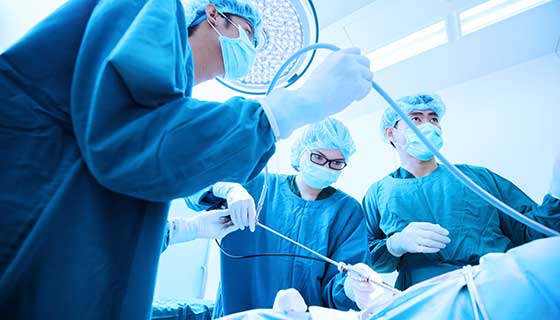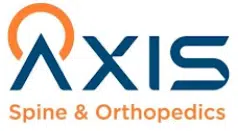An Introduction of Back Conditions That Often Outcome in Surgical Therapies
Spine conditions such as herniated discs, back constriction, and degenerative disc illness regularly demand surgical interventions when conservative therapies stop working to ease consistent signs and symptoms. Understanding the subtleties of each problem and the matching surgical alternatives, such as discectomy or spinal combination, is critical for effective management.
Herniated Discs
Although numerous people with herniated discs might locate alleviation through conservative therapies, surgical procedure comes to be a required factor to consider when symptoms linger or worsen - best spine surgeons in st louis mo. A herniated disc happens when the soft internal gel of a spine disc protrudes through its external layer, possibly compressing close-by nerves and leading to discomfort, numbness, or weakness in the extremities
Conservative monitoring commonly includes physical therapy, pain medications, and corticosteroid shots, which aim to decrease inflammation and boost feature. Nevertheless, in instances where these methods fail to alleviate devastating signs and symptoms, medical choices might be discovered.
One of the most typical surgery for herniated discs is a discectomy, which entails the removal of the herniated section of the disc to soothe stress on the affected nerve root. In a lot more severe cases, back fusion might be essential to stabilize the influenced vertebrae.
People are suggested to go over the potential risks and benefits of surgery with their doctor to make an educated decision. Inevitably, the goal of any type of surgical treatment is to recover function, minimize discomfort, and enhance overall high quality of life for individuals struggling with herniated discs.
Back Stenosis
Spinal constriction takes place when the areas within the spine narrow, leading to increased stress on the back cord and nerves. This condition can create in numerous regions of the back, consisting of the lumbar and cervical locations, typically because of age-related changes, such as degenerative disc illness, arthritis, or thickening of tendons.
Individuals with spine stenosis may provide with signs and symptoms that include pain, feeling numb, prickling, or weakness, primarily in the arms or legs. These signs can be exacerbated by tasks that include standing or walking, commonly leading people to seek relief through traditional therapies like physical therapy, medications, or epidural steroid shots.
However, when these non-surgical interventions stop working to offer adequate relief, medical options may be taken into consideration. Typical medical treatments for spine constriction consist of laminectomy, which entails the removal of component of the vertebra to alleviate stress, and back blend, which supports the damaged location.
Spondylolisthesis
Spondylolisthesis takes place when one vertebra slides ahead over an additional, bring about misalignment of the back. This condition can arise from various aspects, consisting of genetic defects, injury, or degenerative modifications in the back. It is most generally observed in the lumbar region, especially at the L4-L5 and L5-S1 levels.

When non-surgical techniques fail to eliminate signs and symptoms or when considerable nerve compression is present, surgical intervention may look what i found be required. Surgical choices can include spine blend or decompression treatments, aimed at recovering positioning and minimizing neurological signs.
Degenerative Disc Illness

The condition can be identified with a mix of medical evaluation, imaging studies, and person history. When these methods fail to supply appropriate relief, surgical interventions might be taken into consideration.
Surgical choices for DDD may consist of spine blend or man-made disc replacement, intended at maintaining the impacted section and reducing discomfort (best spine surgeons in st louis mo). Inevitably, the selection of treatment is individualized, taking right into account the seriousness of the condition, patient wellness, and lifestyle variables
Spine Tumors

What aspects add to the advancement of lumps within the spinal column, and exactly how do they manifest in people? Back additional resources lumps can arise from different elements, including genetic predisposition, ecological influences, and pre-existing clinical conditions. They can be classified as primary growths, coming from the spinal column, or secondary growths, which spread from various other areas of the body. Clients might provide with a variety of symptoms, including local pain, neurological shortages, weakness, or modifications in bowel and bladder function, depending upon the tumor's size and place.
Medical diagnosis commonly entails imaging researches such as MRI or CT scans, which help mark the tumor's features and influence on bordering structures. In analyzing therapy alternatives, the growth's kind, location, and grade are critical factors to consider. Surgical treatment might be warranted to ease signs, obtain a biopsy, or eliminate the lump totally. The objective of surgery is usually to unwind neural aspects and stabilize the back. Adjuvant treatments, including radiation or chemotherapy, may also be necessary depending upon the lump's nature. Early detection and intervention are critical for maximizing outcomes in clients with spine lumps.
Verdict
In recap, spine problems such as herniated discs, spinal stenosis, spondylolisthesis, degenerative disc condition, and spine lumps frequently necessitate surgical intervention as a result of their possible to trigger significant discomfort and functional problems. While conventional therapies might supply short-lived alleviation, medical alternatives come to be crucial when signs and symptoms continue or get worse. Timely diagnosis and intervention play an important function in recovering function and boosting the quality of life for damaged people, highlighting the value of detailed spinal care.
